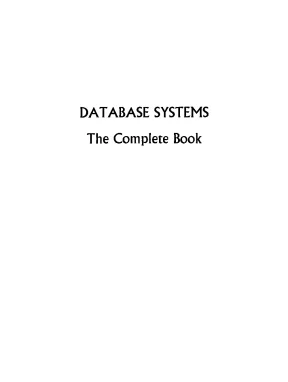I. Tổng quan về Hệ Thống Cơ Sở Dữ Liệu Hướng dẫn chi tiết
Hệ thống cơ sở dữ liệu (CSDL) là một phần quan trọng trong công nghệ thông tin hiện đại. Nó cho phép lưu trữ, quản lý và truy xuất dữ liệu một cách hiệu quả. Các hệ thống này có thể được phân loại thành nhiều loại khác nhau như SQL và NoSQL. Việc hiểu rõ về các loại hệ thống CSDL sẽ giúp người dùng lựa chọn giải pháp phù hợp cho nhu cầu của mình.
1.1. Định nghĩa và vai trò của Cơ Sở Dữ Liệu
Cơ sở dữ liệu là một tập hợp có tổ chức các dữ liệu. Nó giúp người dùng dễ dàng truy cập và quản lý thông tin. Hệ thống CSDL đóng vai trò quan trọng trong việc hỗ trợ các ứng dụng và dịch vụ trực tuyến.
1.2. Các loại Hệ Thống Cơ Sở Dữ Liệu hiện nay
Có hai loại chính của hệ thống CSDL: SQL và NoSQL. SQL là hệ thống quản lý cơ sở dữ liệu quan hệ, trong khi NoSQL phục vụ cho các ứng dụng cần xử lý dữ liệu phi cấu trúc. Mỗi loại có ưu điểm và nhược điểm riêng.
II. Thách thức trong Quản lý Cơ Sở Dữ Liệu Giải pháp hiệu quả
Quản lý cơ sở dữ liệu không chỉ đơn thuần là lưu trữ dữ liệu. Nó còn bao gồm việc bảo mật, tối ưu hóa và đảm bảo tính toàn vẹn của dữ liệu. Các thách thức này đòi hỏi các giải pháp hiệu quả để đảm bảo hệ thống hoạt động trơn tru.
2.1. Vấn đề bảo mật trong Cơ Sở Dữ Liệu
Bảo mật dữ liệu là một trong những thách thức lớn nhất. Các biện pháp như mã hóa và phân quyền truy cập cần được áp dụng để bảo vệ thông tin nhạy cảm.
2.2. Tối ưu hóa hiệu suất Cơ Sở Dữ Liệu
Tối ưu hóa hiệu suất là cần thiết để đảm bảo hệ thống có thể xử lý lượng lớn dữ liệu. Các kỹ thuật như lập chỉ mục và phân vùng dữ liệu có thể giúp cải thiện tốc độ truy xuất.
III. Phương pháp Thiết kế Cơ Sở Dữ Liệu Hướng dẫn chi tiết
Thiết kế cơ sở dữ liệu là một bước quan trọng trong việc xây dựng hệ thống. Một thiết kế tốt sẽ giúp hệ thống hoạt động hiệu quả và dễ dàng mở rộng trong tương lai.
3.1. Các nguyên tắc thiết kế cơ bản
Nguyên tắc thiết kế cơ bản bao gồm việc xác định các thực thể, mối quan hệ và thuộc tính. Điều này giúp tạo ra một mô hình dữ liệu rõ ràng và dễ hiểu.
3.2. Sử dụng mô hình ER trong thiết kế
Mô hình thực thể - mối quan hệ (ER) là một công cụ mạnh mẽ trong thiết kế cơ sở dữ liệu. Nó giúp hình dung cấu trúc dữ liệu và mối quan hệ giữa các thực thể.
IV. Ứng dụng thực tiễn của Hệ Thống Cơ Sở Dữ Liệu Kết quả nghiên cứu
Hệ thống cơ sở dữ liệu được ứng dụng rộng rãi trong nhiều lĩnh vực như thương mại điện tử, ngân hàng và y tế. Những ứng dụng này không chỉ giúp quản lý dữ liệu mà còn cải thiện trải nghiệm người dùng.
4.1. Ứng dụng trong thương mại điện tử
Trong thương mại điện tử, hệ thống CSDL giúp quản lý thông tin sản phẩm, đơn hàng và khách hàng. Điều này giúp tối ưu hóa quy trình bán hàng và nâng cao trải nghiệm khách hàng.
4.2. Ứng dụng trong lĩnh vực y tế
Hệ thống CSDL trong y tế giúp lưu trữ và quản lý thông tin bệnh nhân, lịch sử khám bệnh và kết quả xét nghiệm. Điều này hỗ trợ bác sĩ trong việc đưa ra quyết định điều trị chính xác.
V. Kết luận và Tương lai của Hệ Thống Cơ Sở Dữ Liệu Xu hướng mới
Tương lai của hệ thống cơ sở dữ liệu sẽ tiếp tục phát triển với sự xuất hiện của các công nghệ mới như trí tuệ nhân tạo và học máy. Những công nghệ này sẽ giúp cải thiện khả năng phân tích và xử lý dữ liệu.
5.1. Xu hướng phát triển của CSDL
Các xu hướng như CSDL đám mây và CSDL phi cấu trúc đang ngày càng trở nên phổ biến. Chúng mang lại nhiều lợi ích về khả năng mở rộng và tính linh hoạt.
5.2. Tác động của AI đến CSDL
Trí tuệ nhân tạo sẽ giúp tối ưu hóa quy trình quản lý dữ liệu và cải thiện khả năng phân tích. Điều này sẽ mở ra nhiều cơ hội mới cho các doanh nghiệp.
